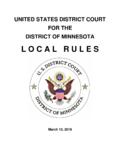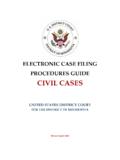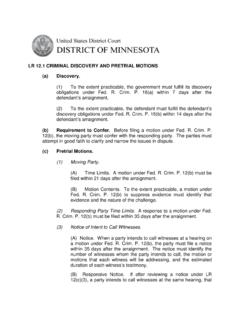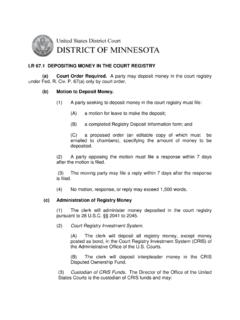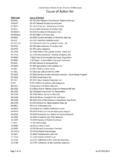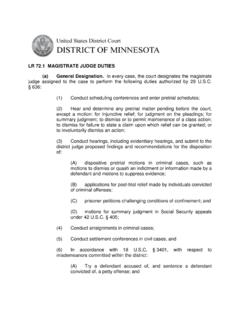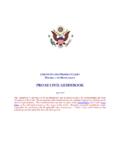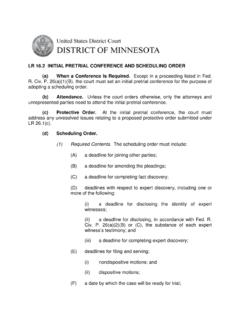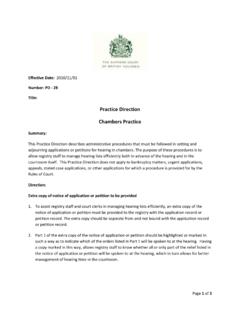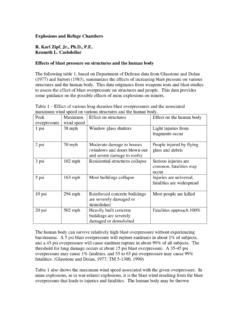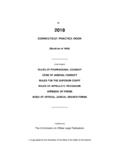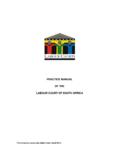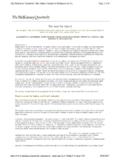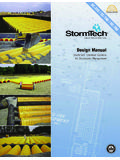Transcription of LR 7.1 CIVIL MOTION PRACTICE (a) Meet-and …
1 LR CIVIL MOTION PRACTICE (a) Meet-and - confer Requirement. Before filing a MOTION other than a MOTION for a temporary restraining order or a MOTION under Fed. R. Civ. P. 56, the moving party must, if possible, meet and confer with the opposing party in a good-faith effort to resolve the issues raised by the MOTION . The moving and opposing parties need not meet in person. (1) Meet-and - confer Statement. (A) Filing. Ordinarily, the moving party must file a Meet-and - confer statement together with the MOTION that it relates to.
2 But if the opposing party was unavailable to meet and confer before the moving party files its MOTION , the moving party must promptly meet and confer with the opposing party after filing the MOTION and must supplement the MOTION with a Meet-and - confer -statement. (B) Contents. The Meet-and - confer statement must: (i) certify that the moving party met and conferred with the opposing party; and (ii) state whether the parties agree on the resolution of all or part of the MOTION and, if so, whether the agreed-upon resolution should be included in a court order.
3 (2) Subsequent Agreement of the Parties. After the moving party has filed a Meet-and - confer statement, if the moving and opposing parties agree on the resolution of all or part of the MOTION that the statement relates to, the parties must promptly notify the court of their agreement by filing a joint stipulation. (b) Nondispositive Motions. Unless the court orders otherwise, all nondispositive motions must be heard by the magistrate judge. Before filing a nondispositive MOTION , a party must contact the magistrate judge s courtroom deputy to schedule a hearing.
4 After a party obtains a hearing date, the parties may jointly request that the hearing be canceled. If the court cancels the hearing whether at the parties joint request or on its own the parties must nonetheless file and serve their MOTION papers by the deadlines that would have applied if the hearing had not been canceled. (1) Moving Party; Supporting Documents; Time Limits. At least 14 days before the date of a hearing on a nondispositive MOTION , the moving party must file and serve the following documents simultaneously: (A) MOTION ; (B) notice of hearing; (C) memorandum of law; (D) any affidavits and exhibits; (E) Meet-and - confer statement (unless later filing is permitted under LR (a)(1)(A)); and (F) proposed order (an editable copy of which must be emailed to chambers).
5 (2) Responding Party; Supporting Documents; Time Limits. Within 7 days after filing of a nondispositive MOTION and its supporting documents under LR (b)(1), the responding party must file and serve the following documents: (A) memorandum of law; and (B) any affidavits and exhibits. (3) Reply Memorandum. Except with the court s prior permission, a party must not file a reply memorandum in support of a nondispositive MOTION . (4) Applicability of this Subsection. (A) Nondispositive motions covered by this subsection include, for example: (i) motions to amend pleadings; (ii) motions with respect to third-party PRACTICE ; (iii) discovery-related motions; (iv) motions related to joinder and intervention of parties; and (v) motions to conditionally certify a case as a collective action.
6 (B) This subsection does not apply to: (i) nondispositive motions that are treated as dispositive motions under LR (c)(6); or (ii) post-trial and post-judgment motions. (c) Dispositive Motions. Unless the court orders otherwise, all dispositive motions must be heard by the district judge. Before filing a dispositive MOTION , a party must contact the district judge s courtroom deputy. The courtroom deputy will either schedule a hearing or instruct the party when to file its MOTION and supporting documents.
7 If a hearing is scheduled, the parties may jointly request that the hearing be canceled. If the court cancels the hearing whether at the parties joint request or on its own the parties must nonetheless file and serve their MOTION papers by the deadlines that would have applied if the hearing had not been canceled. (1) Moving Party; Supporting Documents; Time Limits. At least 42 days before the date of a hearing on a dispositive MOTION or, if no hearing has been scheduled, as instructed by the courtroom deputy the moving party must file and serve the following documents simultaneously: (A) MOTION ; (B) notice of hearing; (C) memorandum of law; (D) any affidavits and exhibits; (E) Meet-and - confer statement, if required under LR (a) (unless later filing is permitted under LR (a)(1)(A)).
8 And (F) proposed order (an editable copy of which must be emailed to chambers). (2) Responding Party; Supporting Documents; Time Limits. Within 21 days after filing of a dispositive MOTION and its supporting documents under LR (c)(1), the responding party must file and serve the following documents: (A) memorandum of law; and (B) any affidavits and exhibits. (3) Reply Memorandum. (A) Within 14 days after filing of a response to a dispositive MOTION , the moving party must either: (i) file and serve a reply memorandum; or (ii) file and serve a notice stating that no reply will be filed.
9 (B) A reply memorandum must not raise new grounds for relief or present matters that do not relate to the opposing party s response. (4) Multiple Summary Judgment Motions. For purposes of the word and line limits in LR (f), multiple motions for full or partial summary judgment filed by a party at or about the same time will be considered a single MOTION . (5) MOTION Hearing or Other Resolution. (A) On Court s Initiative. At any time after a party files a dispositive MOTION and the MOTION s supporting documents, the court may: (i) schedule a hearing (if no hearing was initially scheduled) (ii) reschedule a hearing; (iii) refer the MOTION to a magistrate judge; or (iv) cancel a hearing and notify the parties that the MOTION will be otherwise resolved.
10 (B) At a Party s Request. If a district judge has not scheduled a hearing on a dispositive MOTION , the moving or opposing party may file a letter of no more than two pages requesting that a hearing be scheduled. Such a request must be made no sooner than 14 days after the moving party has filed its reply or its notice that a reply will not be filed. This rule authorizes the parties to file those letters by ECF. (6) Applicability of this Subsection. The following motions are considered dispositive motions under LR : (A) motions for injunctive relief; (B) motions for judgment on the pleadings, to dismiss, or for summary judgment; (C) motions to certify a class action; (D) motions to exclude experts under Fed.
